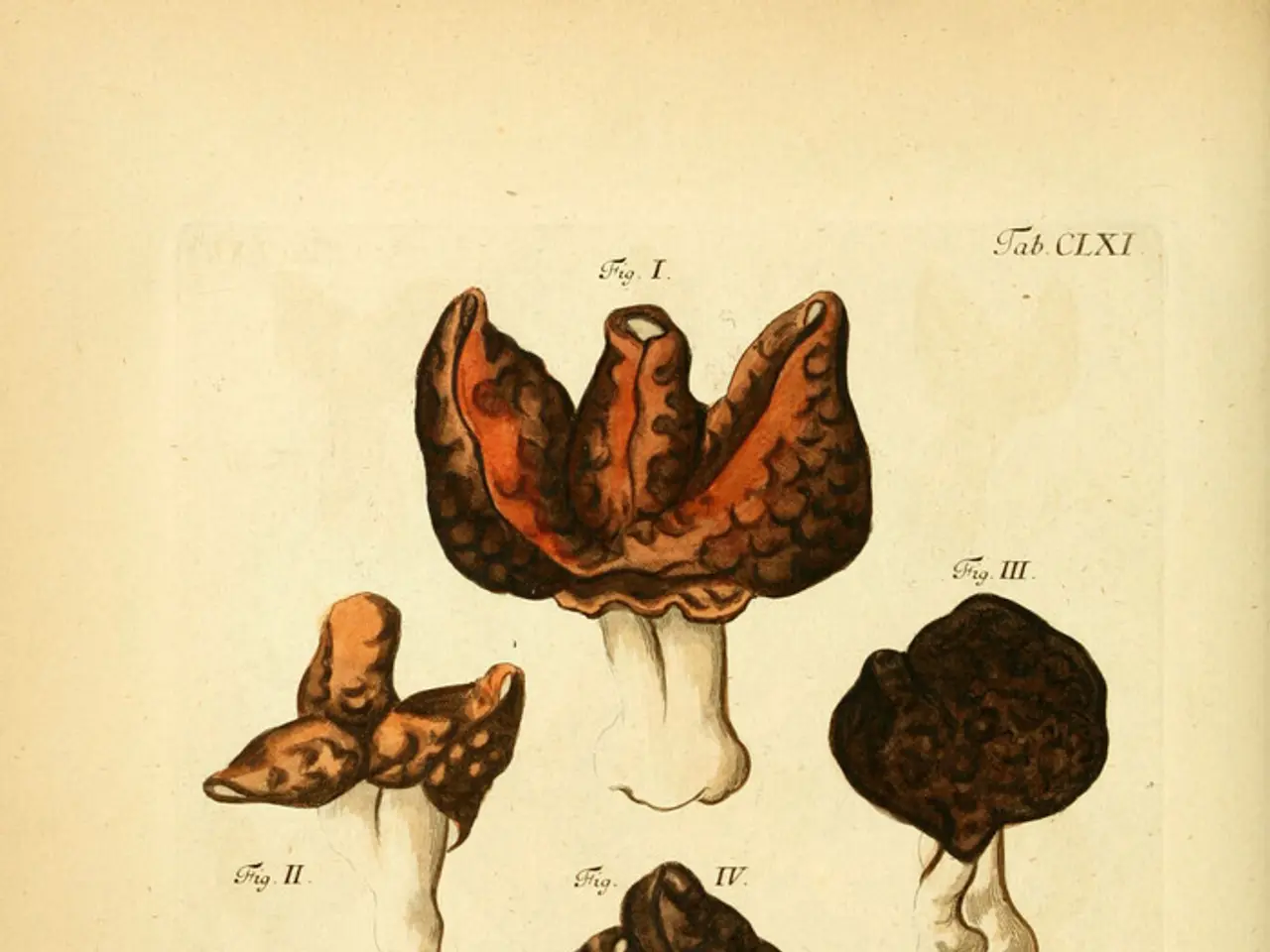Deadly Dining: The Appetizing Fungi that May End Your Life
In the lush green landscapes of the UK, a hidden danger lurks - poisonous mushrooms. These deceiving fungi can cause severe illness and even death if consumed. Here's a guide to identifying some of the most dangerous mushrooms found in the UK.
One of the deadliest is the death cap mushroom (Amanita phalloides). Responsible for most fatal mushroom poisonings globally, it contains amatoxins, particularly alpha-amanitin, which cause severe liver failure and damage to other organs like the kidneys. Symptoms typically start after a latent period with gastrointestinal upset (nausea, vomiting, diarrhea), followed by jaundice, seizures, coma, and often death.
Another deadly duo in the UK is the deadly webcap and fool’s webcap (both containing orellanine toxin). These mushrooms primarily damage the kidneys, and symptoms may be delayed for several days, by which time serious kidney damage occurs. Medical treatment can require dialysis or even kidney transplantation.
The fly agaric mushroom (Amanita muscaria) is also poisonous and hallucinogenic, containing muscarine, muscimol, and other toxic alkaloids. Symptoms onset rapidly—nausea, vomiting, diarrhea, salivation, sweating, breathing difficulties, pupil dilation, confusion, and excitability. Recovery usually occurs within 12 hours, and death is rare.
Other mushrooms like certain Russulas (e.g., the "Sickeners") cause gastrointestinal illness but are not usually fatal.
Mushrooms that might seem harmless can indeed be deadly. For example, the lady who met John Wright at a dinner once fell ill from eating dapperlings, mistaking them for edible parasols. Dapperlings produce the same toxin as the death cap and resemble edible parasols but are smaller.
Other poisonous mushrooms to watch out for include the angel wings, which grow only on dead pine and cedar trees and have a bright, matt white cap. The black morel is uncommon in Britain except on flowerbed wood chippings. The brown rollrim, a type of fibrecap, has caused deaths, and it is commonly consumed in central Europe and possibly in Britain by those from Eastern Europe. It is grubby brown, slimy when wet, and shallowly funnel-shaped with broad grooves on the cap edge.
The deadly fibrecap contains the 'sweating toxin' muscarine, similar to the fly agaric. The yellow stainers are the most common cause of mushroom poisoning in the UK. Consuming the brown rollrim over months or years may lead to 'autoimmune haemolytic anaemia'.
It's essential to remember that many dangerous species look similar to edible varieties. Never consume wild mushrooms without expert identification, as mushroom poisoning typically involves gastrointestinal symptoms initially, but deadly species cause progressive organ failure, especially liver or kidney failure, which can be fatal without prompt medical intervention. Stay safe, and enjoy the great outdoors responsibly!
- In the realm of health and wellness, it's crucial to be aware that some seemingly harmless mushrooms can pose a serious threat, such as the dapperling, which, despite resembling edible parasols, contains the same toxin as the deadly death cap mushroom.
- When engaging in cooking or food-and-drink related activities in the UK, it's essential to recognize potentially dangerous mushrooms like the brown rollrim, a fibrecap type that has caused deaths and is commonly consumed in central Europe.
- In the context of lifestyle choices, it's important to prioritize knowledge about medical-conditions, including the deadly fibrecap mushroom, which contains the 'sweating toxin' muscarine, similar to the more well-known fly agaric mushroom.




